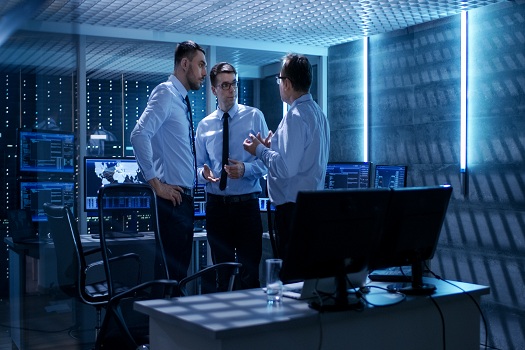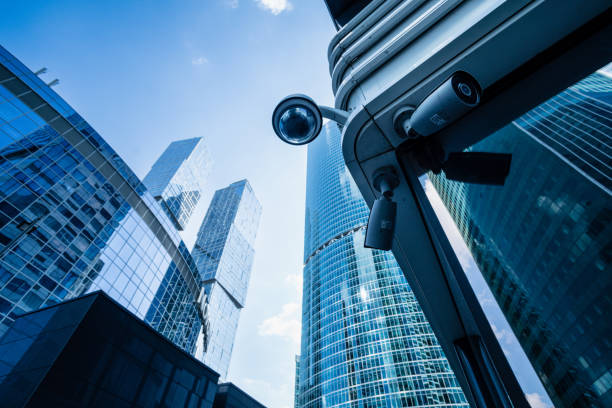Corporate Security Introduced: Protecting Your Assets and Credibility
Wiki Article
From Cybersecurity to Physical Steps: Strengthening Company Protection in an Altering World
In today's rapidly advancing digital landscape, the relevance of business safety and security can not be overemphasized. As cyber risks come to be widespread and significantly advanced, companies should go beyond traditional cybersecurity actions to secure their operations and properties - corporate security. This is where the assimilation of physical safety measures ends up being essential. By incorporating the strengths of both cybersecurity and physical protection, companies can create a thorough protection approach that deals with the diverse array of risks they encounter. In this discussion, we will check out the transforming risk landscape, the requirement to incorporate cybersecurity and physical security, the execution of multi-factor authentication steps, the value of staff member awareness and training, and the adaptation of safety actions for remote labor forces. By analyzing these vital areas, we will certainly acquire beneficial understandings right into how companies can reinforce their corporate security in an ever-changing globe.Understanding the Transforming Danger Landscape
The progressing nature of the contemporary globe necessitates a comprehensive understanding of the transforming danger landscape for efficient company safety. In today's electronic and interconnected age, risks to corporate safety have become more complicated and sophisticated. As innovation breakthroughs and businesses end up being increasingly reliant on digital facilities, the potential for cyberattacks, data violations, and various other safety and security violations has substantially increased. It is vital for companies to stay informed and adjust their protection determines to attend to these progressing hazards.One trick aspect of recognizing the altering threat landscape is identifying the various types of hazards that organizations deal with. In addition, physical dangers such as burglary, vandalism, and business reconnaissance stay prevalent issues for organizations.
Surveillance and assessing the threat landscape is vital in order to identify potential risks and vulnerabilities. This entails remaining updated on the most recent cybersecurity fads, evaluating danger intelligence reports, and performing regular risk evaluations. By understanding the changing danger landscape, organizations can proactively apply suitable security procedures to alleviate dangers and safeguard their possessions, reputation, and stakeholders.
Integrating Cybersecurity and Physical Protection
Incorporating cybersecurity and physical security is critical for comprehensive corporate security in today's digital and interconnected landscape. As organizations increasingly rely upon modern technology and interconnected systems, the borders in between physical and cyber risks are coming to be obscured. To effectively safeguard versus these risks, an all natural strategy that combines both cybersecurity and physical protection measures is essential.Cybersecurity concentrates on securing digital possessions, such as systems, networks, and data, from unauthorized accessibility, disruption, and burglary. Physical safety and security, on the other hand, incorporates measures to protect physical properties, individuals, and facilities from hazards and susceptabilities. By integrating these two domains, companies can deal with vulnerabilities and dangers from both electronic and physical angles, thus enhancing their general security stance.
The integration of these 2 disciplines enables a more extensive understanding of safety and security threats and enables a unified action to events. For instance, physical accessibility controls can be improved by integrating them with cybersecurity procedures, such as two-factor authentication or biometric recognition. In a similar way, cybersecurity steps can be matched by physical safety actions, such as security cameras, alarms, and protected access points.

Implementing Multi-Factor Verification Steps
As companies increasingly focus on thorough safety and security actions, one effective technique is the execution of multi-factor authentication actions. Multi-factor authentication (MFA) is a safety approach that calls for individuals to supply numerous forms of recognition to access a system or application. This technique includes an extra layer of protection by integrating something the individual recognizes, such as a password, with something they have, like a fingerprint or a safety and security token.By applying MFA, companies can significantly enhance their safety position - corporate security. Standard password-based verification has its constraints, as passwords can be conveniently jeopardized or neglected. MFA minimizes these threats by including an additional authentication aspect, making it a lot more hard for unapproved people to get accessibility to delicate info
There are a number of kinds of multi-factor verification approaches readily available, consisting of biometric authentication, SMS-based verification codes, and equipment tokens. Organizations need to evaluate their particular demands and choose the most proper MFA option for their requirements.
Nevertheless, the implementation of MFA ought to be thoroughly prepared and performed. It is essential to strike a balance between security and functionality to stop customer disappointment and resistance. Organizations should also think about prospective compatibility issues and offer adequate training and assistance to guarantee a smooth change.
Enhancing Worker Understanding and Training
To strengthen company protection, organizations should prioritize enhancing staff member awareness and training. In today's rapidly advancing danger landscape, employees play a crucial role in guarding an organization's delicate info and properties. Sadly, lots of safety and security violations occur due to human mistake or lack of recognition. Organizations need to spend in comprehensive training programs to inform their staff members concerning potential dangers and the ideal practices for alleviating them.Effective staff member awareness and training programs ought to cover a large array of subjects, consisting of information protection, phishing attacks, social engineering, password health, and physical security measures. These programs ought to be tailored to the particular needs and responsibilities of different employee roles within the organization. Normal training workshops, sessions, and simulations can help workers create the needed abilities and expertise to respond and recognize to safety hazards effectively.
Moreover, organizations need to urge a society of protection awareness and give continuous updates go to the website and pointers to keep staff members notified about the most up to date risks and reduction methods. This can be done through interior interaction channels, such as e-newsletters, intranet websites, and email campaigns. By cultivating a security-conscious labor force, organizations can dramatically decrease the likelihood of security occurrences and protect their beneficial assets from unapproved gain access to or concession.

Adapting Safety Actions for Remote Workforce
Adapting business safety measures to fit a remote labor force is crucial in ensuring the protection of delicate information and assets (corporate security). With the enhancing pattern of remote job, companies have to execute proper protection measures to minimize the risks related to this new method of workingOne vital facet of adjusting protection actions for remote job is establishing safe and secure communication channels. Encrypted messaging platforms and virtual exclusive networks (VPNs) can help protect sensitive details and avoid unapproved gain access to. In addition, companies need to enforce making use of solid passwords and multi-factor authentication to improve the security of remote accessibility.
An additional essential factor to consider is the execution of safe remote gain access to options. This involves providing staff members with safe access to corporate sources and data with digital desktop framework (VDI), remote desktop computer methods (RDP), or cloud-based options. These innovations make sure that sensitive details continues to be protected while making it possible for workers to do their duties successfully.

Lastly, comprehensive safety and security recognition training is important for remote staff members. Educating sessions ought to cover ideal techniques for securely accessing and dealing with sensitive details, determining and reporting phishing attempts, and preserving the total cybersecurity health.
Conclusion
In conclusion, as the hazard landscape proceeds to evolve, it is important for organizations to strengthen their protection determines both in the cyber and physical domains. Integrating cybersecurity and physical security, implementing multi-factor verification steps, and enhancing staff member recognition and training are necessary steps in the direction of achieving robust corporate protection.In this conversation, we will check out the changing threat landscape, the demand to integrate cybersecurity and physical protection, the application of multi-factor authentication procedures, the significance of staff member recognition and training, and the adaptation of safety and security measures for remote workforces. Cybersecurity actions can be matched by physical protection measures, such as surveillance cams, alarms, and secure accessibility points.
As companies significantly prioritize detailed more information protection steps, one efficient you could try this out approach is the application of multi-factor verification measures.In verdict, as the threat landscape continues to progress, it is crucial for organizations to reinforce their safety and security determines both in the cyber and physical domain names. Incorporating cybersecurity and physical safety and security, executing multi-factor authentication measures, and enhancing worker recognition and training are essential actions in the direction of achieving robust business safety.
Report this wiki page